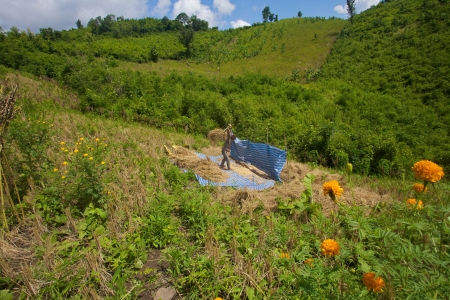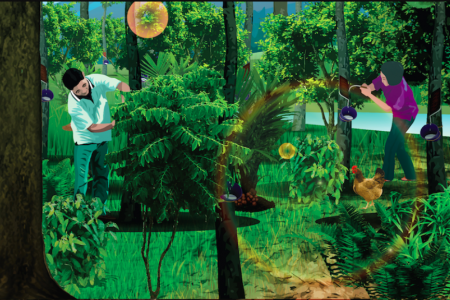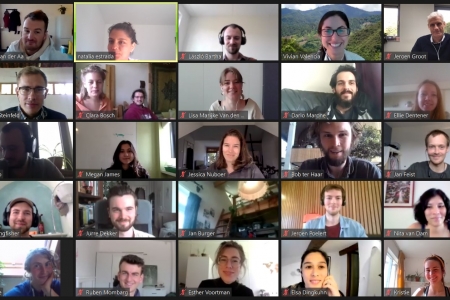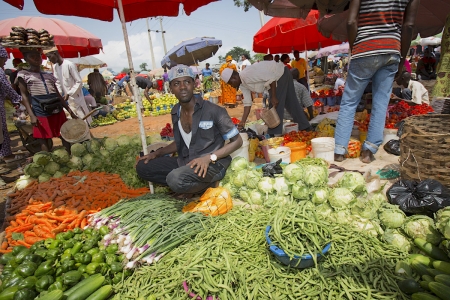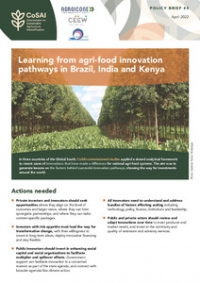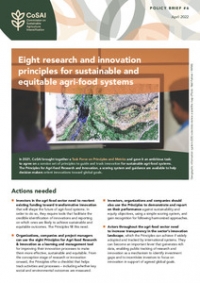This post is part of an online discussion on large-scale land interventions that runs through December 14, 2014. Can these initiatives fulfill their promises? Read more here and comment below or send an 800 word response to a(dot)waldorf(at)cgiar(dot)org.
A burst of green brightens up what is otherwise a barren, rocky landscape in the mountains of Kyrgyzstan. Gulmira Sharsheeva and her husband established an orchard of fruit trees here in 1990; 4.5 hectares of land that is now brimming with local varieties of apples, apricots, pears and cherry. Agriculture transforms the landscape in this region, and Gulmira’s orchard shows how local fruit tree diversity can also provide her family with a reliable source of income.
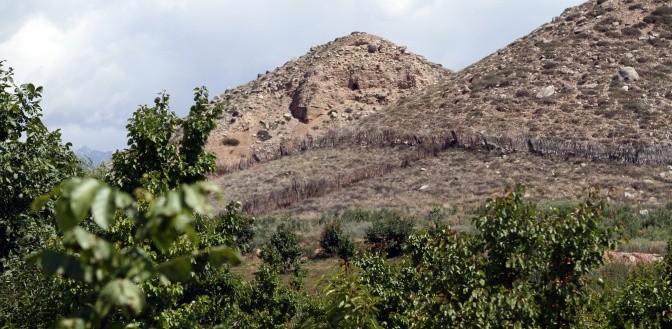
Fruit trees are the cornerstone of Central Asian agriculture. They grow well in water-scarce environments, help restore soils and are an important source of food and nutrition. No Central Asian home is complete without its dried fruits and nuts, sour cherry jams and homegardens of fresh fruit.
An unexpected by product
It appears now that fruit trees may also hold the key to restoring degraded lands in the region’s mountains. Bioversity International has been working in the region with national partners for over 15 years, mostly on the conservation of fruit tree diversity through its multiplication and use. In a way, restoration of degraded lands was an unexpected by product of our work, but a much welcomed one.
We are now actively restoring degraded and abandoned mountain areas in Uzbekistan and Kyrgyzstan by planting drought-resistant fruit and nut trees, mostly local varieties that are already adapted to local conditions.
Currently these are mostly small-scale demonstration plots to show farmers what can be done with suitable fruit tree varieties and teach techniques such as good pruning and planting the right mixtures.
But from experience, showing by doing is probably one of the most effective ways to scale up in a decentralized way. To give an example, many farmers in the mountains are also pastoralists, and overgrazing is a serious issue. In response, many farmers are replacing their sheep with goats because they demand less grass, but this only worsens the situation because goats eat everything – shoots, roots – essentially killing what is left of the vegetation.
So when we first started working with farmers in the region, we suggested planting fruit trees as a way to bring back the grass, but many farmers were skeptical because they had failed in previous attempts. Most of the trees they had planted died or were not productive.
Only one farmer, Nematjon Norkushakov, agreed to give it a go. We recommended tree species and varieties that were suitable for local soil, and he now grows apples, walnuts and grapes, which he sells at the market. The fruit trees have brought the grass back to his slopes, and with plenty of fodder available; he has invested more in cattle than sheep to produce milk for fresh, creamy yoghurt – a signature product of the area. As a result, his originally skeptical neighbours are coming to him to learn about which tree varieties to plant and how to take care of them.
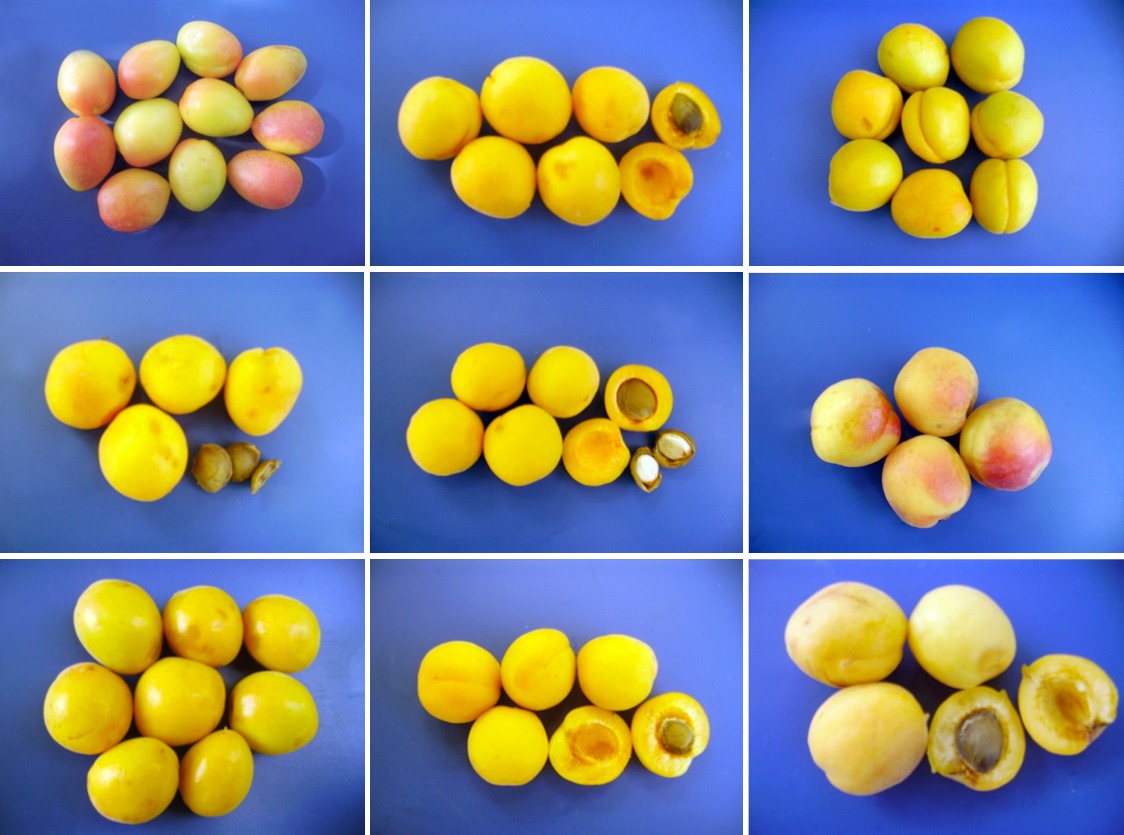
From local to regional knowledge sharing
One farmer, then another and another, this is one way to make small-scale restoration large-scale. What farmers often lack, is a breadth of knowledge regarding potential varieties that they can plant. Most of them know their own soil and trees well, but not what is available regionally.
For example, at higher altitudes, we recommended frost-resistant varieties because if flowers freeze and fall off due to frost, no fruits are produced. For drought-resistance, pistachio and almonds fare the best, but even then, detailed knowledge makes a difference. Planting both male and female trees of pistachio is essential to encourage pollination and higher yields. Male trees flower for a longer period of time, so a farmer can maximize this time frame by planting a mix of female varieties that flower at different times (some earlier, some later). Doing this increases pollination opportunities and consequently improves fruit yields.
Land tenure improves investment
Another aspect that farmers often lack is secure land tenure. Part of our work with farmers such as Gulmira, is helping them get private ownership of their land. This is a strong incentive for farmers to invest in and take care of their soil.
Working with national partners, we are currently training 300 farmers, researchers and policy specialists every year on how to grow and maintain local fruit tree varieties. We have set up 59 nurseries across Central Asia that supply 1.5 million seedlings annually. They help us organize seed fairs to encourage more farmers to use traditional fruit tree varieties.
Some farmers, like Gulmira and Nematjon, have learnt how to multiply seedlings and act as mini supply hubs in their own communities. They are also knowledge hubs that can pass on agronomic techniques such as pruning properly, whitewashing tree trunks to reduce frost susceptibility and using pesticide at appropriate times.
Our success with restoration in mountainous regions has directly influenced governments such as Uzbekistan. This year Uzbekistan launched a national programme to establish orchards and vineyards (especially in vulnerable rainfed areas) to combat land degradation. Around 50% of arable land in Central Asia is degraded, so the potential of using local fruit tree diversity for restoration is huge. There is a wealth of genetic diversity that already exists in the region. Why not make the best use of it?
Find out more about Bioversity International’s work in Central Asia, restoration and landscapes.




